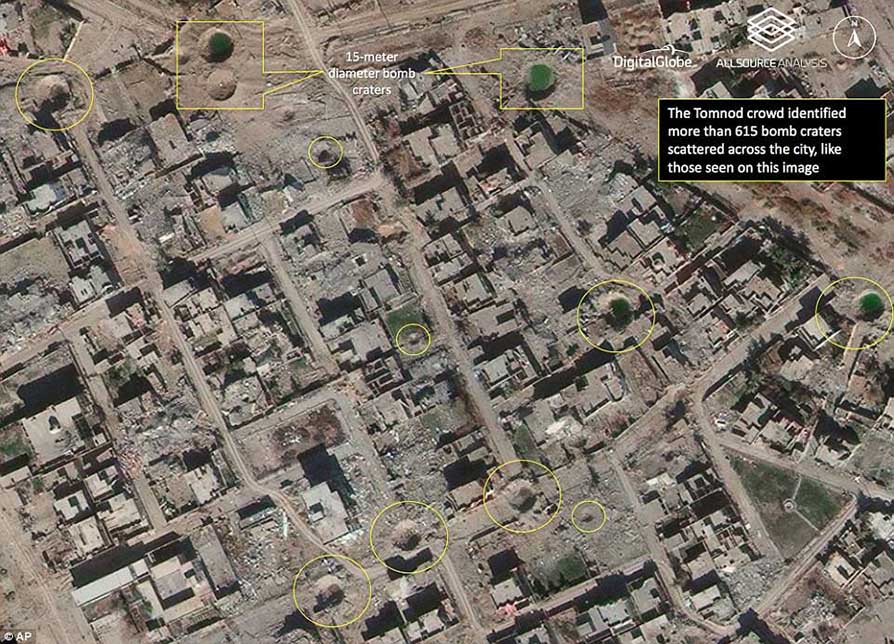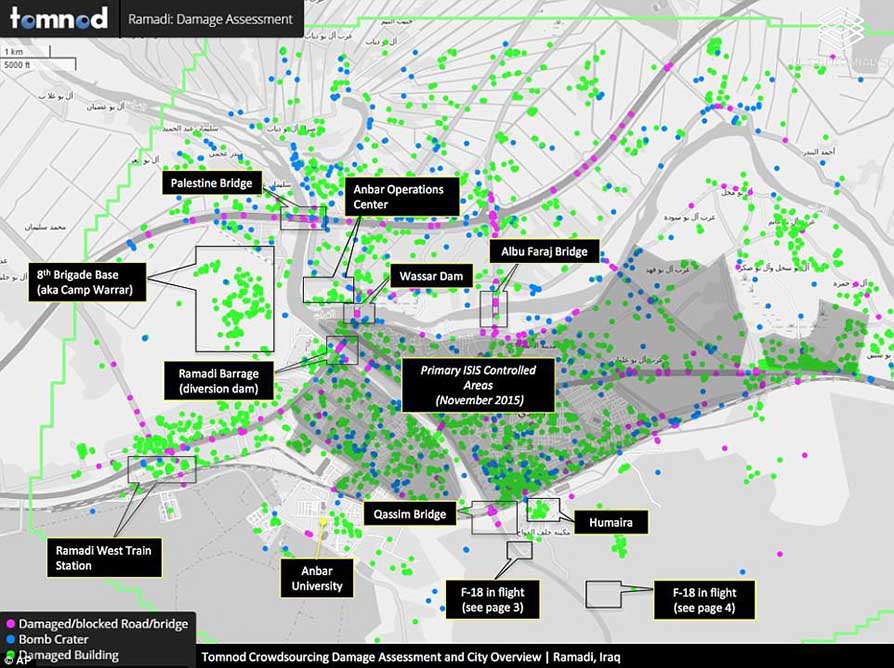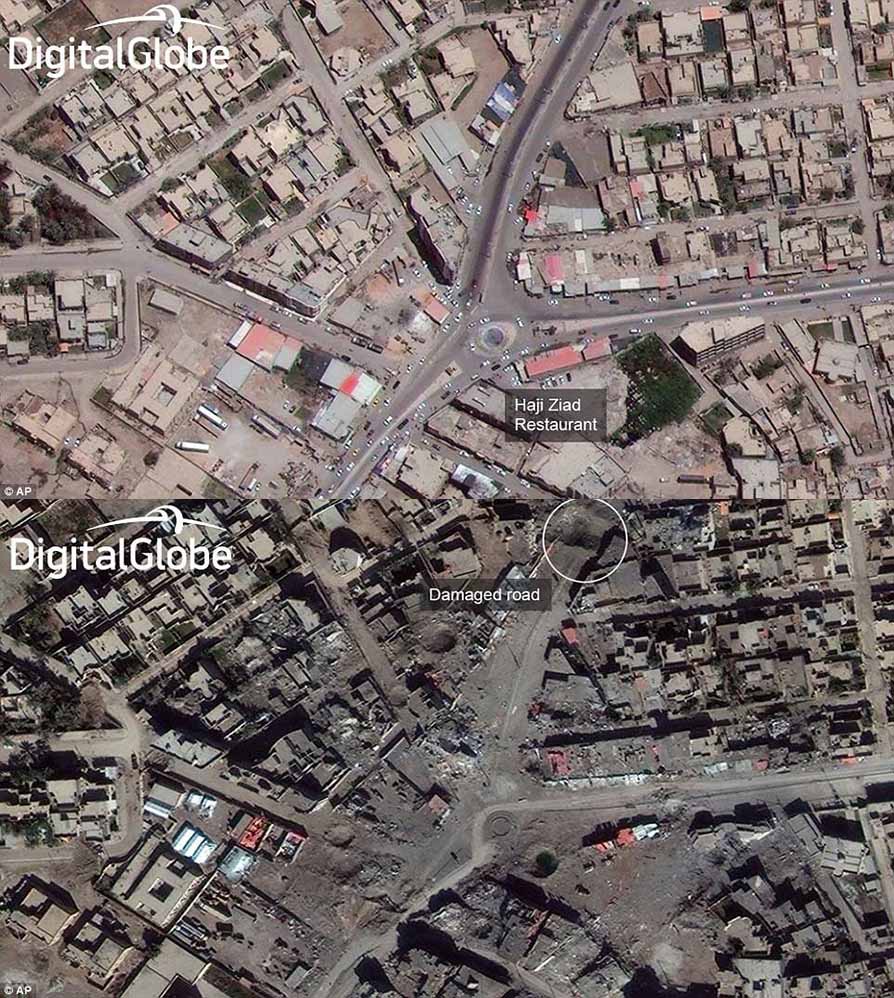A series of satellite images show the consequences of the eight months of aerial bombardment suffered by Ramadi, the former stronghold of ISIS in Iraq, now reduced to a pile of rubble. More than 3.000 buildings and almost 400 between roads and bridges have been destroyed by bombs from the International Coalition aircraft.
In Haji Ziad Square, in the center of the city, not a single building remained standing: restaurants, apartments, shops were destroyed or were blown up by booby traps left by Islamic militants, who were put to flight by the firestorm arrived from heaven in support of the advance of Iraqi government forces. Destruction extends to every part of the city, once home to a million people, now completely deserted. Everywhere huge craters, unmistakable signs of the strike of a laser-guided bomb interrupt the roads or leave halfway bridges that connected the two banks of the city on the Euphrates River.
The buildings, uncovered and reduced to shapeless masses of rubble and distorted metals, testify to the explosions of explosive traps manufactured by ISIS militants to leave behind only death and devastation. ISIS employed the 'scorched earth' strategy by littering the city with IEDs, IEDs and blasting all the bridges and roads that remained intact during their retreat.
This is the price of victory in Ramadi. A 'liberated' city that no longer exists. Despite the lack of electricity, caused by the complete destruction of the entire electricity grid, the civilian population tried to return to their homes after the liberation; but the booby traps caused dozens of victims, highlighting that the city is not safe. According to estimates by the United Nations satellite mapping agency UNITAR, out of a total of about 55.000 buildings, 5,700 would have been completely destroyed.
'They left only rubble'said Major Mohammed Hussein, commander of the Iraqi counterterrorism battalion, the first to enter Ramadi. 'Nothing can be done with these ruins' - commented.
Now the area is being cleaned up, while the inhabitants of Ramadi remain in the refugee camps in the outskirts of Baghdad, in those set up near Lake Habbaniyah, or in nearby villages.
International sources report that in the course of fighting civilians around 800, the clashes and executions perpetrated in the name of the Black Caliphate were deemed killed among the air raids. The others managed to escape, despite the checkpoints established by ISIS on the streets escape to prevent the civilian population from leaving the city.
Today the few signs of life that can be found in the city of Ramadi are the soldiers of the regular Iraqi army who are now patrolling the checkpoint, and witness unarmed destruction caused by war.















